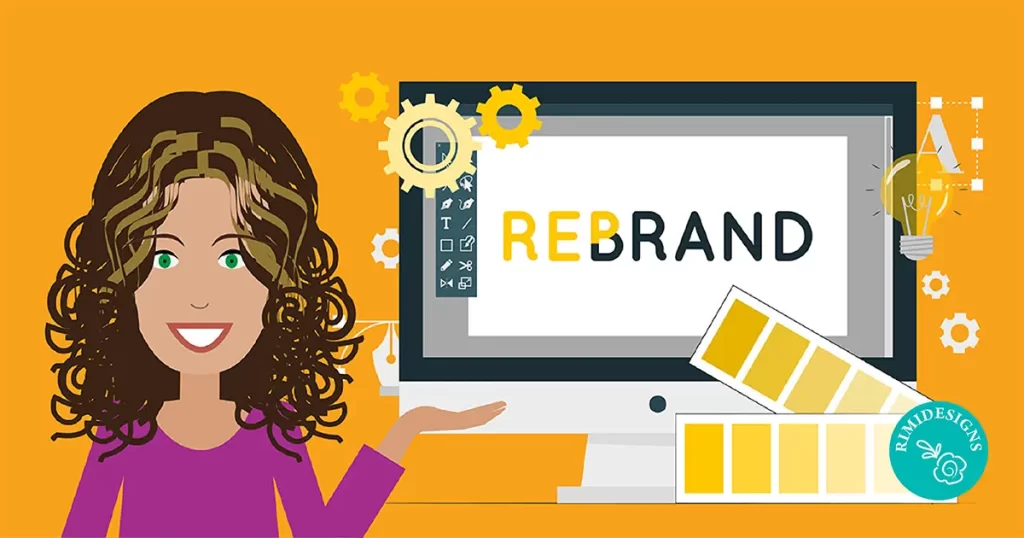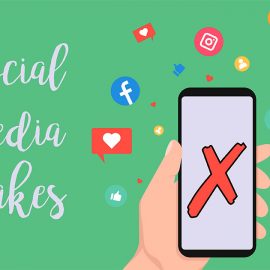
When Is It Time to Rebrand?
Rebranding is simply when a company redoes or improves any of its branding elements: logo, colour palette, typography, etc. You can rebrand as much or as little as you want, from simply changing your slogan to changing everything, including your company name.
It helps to think about it as 3 different categories.
Brand refresh
You change minor details only, such as modernising individual aspects of your logo or slightly changing the hues of your colour palette.Partial rebrand
You change certain elements but not others, such as using a new logo that uses elements, themes and colours from your old logo.Full rebrand
You change everything as if you were a completely different company.
While rebranding isn’t always necessary, if you move forward with it there is a sacrifice involved. For starters, there’s the cost of rebranding — anything from hiring a one-time logo designer to funding a worldwide, multimedia ad campaign to launch your new look. That’s not just an investment of money, but of time and human resources as well.
On top of that, rebranding always carries a risk that your new brand won’t perform as well as your old one. You can mitigate this risk through proper planning and following the steps below, but nothing is foolproof. That’s why a company should only consider a rebrand when the time is right.
When is the right time to rebrand?
How do you know when it’s time to rebrand? Below are some common red flags that signal rebranding might be a good idea.
You’re changing your products/services
We’re not talking about introducing one or two new products or offering your flagship item in a new colour. If you’re breaking into a new market, a rebrand is a good way to garner attention and re-introduce yourself.
That goes for pricing as well. If your company is known for its high-end and exclusive goods and you want to offer that same kind of product to newer customers at a lower cost, rebranding can ease the transition.
Likewise, if you’re using a new ingredient or material, or if you’re modifying your service in some way, rebranding can draw positive attention to the change. Maybe you’re switching to organic products and want to rebrand yourself as an “all natural” brand. That requires a whole new branding strategy.
You’re expanding or pivoting to a new audience
Similar to changing your products or services, if you’re expanding your business into a new demographic or changing your main target entirely, you’ll need to rethink your branding strategy.
Different customers have different preferences for what kinds of brands they want to do business with. That’s all part of the psychology of branding. If your customer base is changing, you want to optimise your brand elements to suit them.
Your current branding misses the mark
Maybe your original branding never performed as well as you wanted. Maybe you’re making one of the common bad branding mistakes. It’s a reasonable misjudgment; what we think our brand should be before we launch can be worlds apart from what it needs to be when we open up shop.
You don’t have to stick with a flawed brand design if it’s hurting your business. A quick rebrand, even just a partial rebranding, can resolve what doesn’t work without harming what does.
You want to distance yourself from a bad reputation
If people start associating your logo, brand name, etc., with a company misstep, it might be best to offer them something new and different to distance themselves from negative connotations.
This isn’t a perfect solution, as some customers aren’t so quick to forget. And it takes time to implement new policies and fix errors. However, if you’ve acknowledged your mistakes and worked hard to correct your mistakes, rebranding might help your brand move forward.
You don’t stand out enough from your competitors
If your competitors are targeting the same audiences you are, it makes sense that they use the same branding strategies. After all, you both have the same end goal. That’s why you often see similar products with similar packaging, or different companies in the same industry using the same colours.
In situations when it’s hard to tell you and your rivals apart, a rebrand can give you a new face that stands out. You can even use your competitor’s branding to your advantage by designing something that looks better next to it.
Your company structure has changed
Mergers, acquisitions, new leadership, new policies, etc. Rebranding is a great way to tell the world your company is going in a new direction.
Of course, this isn’t always necessary — if it ain’t broke, don’t fix it. But in situations where the brand personality is changing from the inside-out, rebranding can broadcast that your company is evolving.
Time makes fools of us all
Think you’re off the hook because none of the other warning signs apply to you. Think again! At some point or another, every company should rebrand, if not after a few years then after a few decades.
Society’s visual tastes and styles never stop changing. Consider the aesthetics of the 1970s versus the aesthetics of the 1920s versus the aesthetics of ancient Greece. Certain looks are associated with certain time periods, and before long your “modern” logo is going to look outdated and old.
It’s best to rebrand yourself periodically, although the precise intervals depend on your company, industry and target customers. Still, it’s a discussion your company should be having every few years, especially if you notice the trends shifting.
SOURCE: 99designs
Rimidesigns’ Business Starter Pack is designed to get you up and running as quickly as possible and is a great way to promote your business and services online. Includes: logo design, business card design and single page website.



